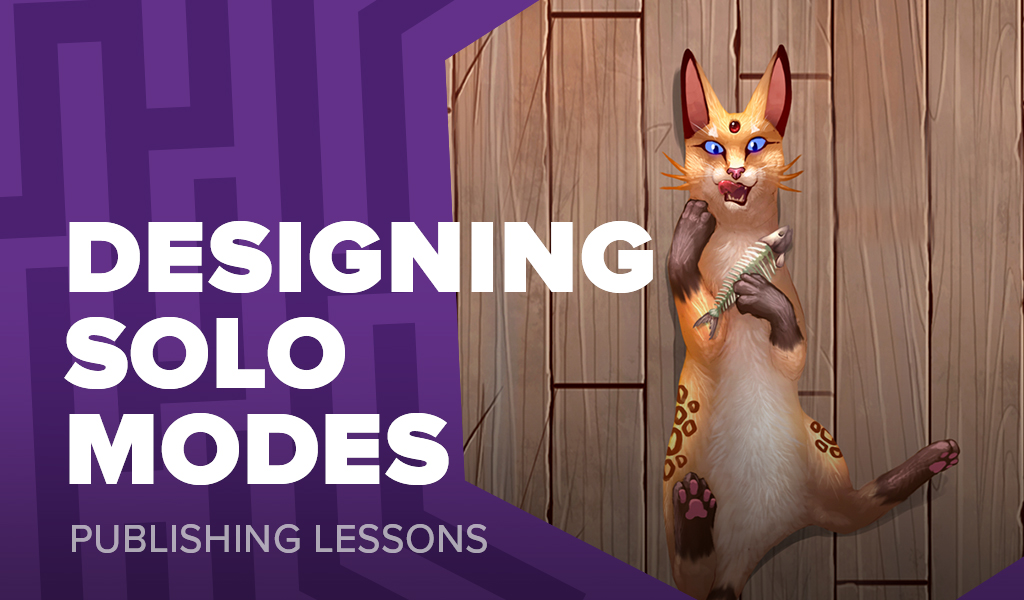Designing a solo mode for competitive games

In a recent survey I learned approximately 15% of my community play my games solo, and through further analysis I discovered that number increases to 21% when just looking at my Kickstarter backers.
This means 1 in every 5 of my backers are turning up because my games have a solo mode, making it a very important thing to include.
During a games design process, I spend a considerable amount of time exploring how a solo mode could work, and what approach to take. I want to provide an experience for solo players that is as close as possible to the multiplayer experience while adding the fewest number of extra steps for the player as possible.
If in a solo mode someone has to spend more time managing and updating simulated players than taking their own turns, they aren’t going to have much fun.
For The Isle of Cats I looked into each action a player takes and measured how much interaction with other players each decision has.
For example, in the first stage of each round every player gets 20 fish, as long as I get my 20 fish other players being given fish makes no difference to me so this doesn’t need to be replicated in a solo mode. The fourth stage of each round is when you rescue cats and during this phase players take it in turns to select cats from the available pool. Other players play a huge role in this part, directly impacting your options and as such, I wanted to replicate the feeling of this in the solo experience.
The important thing to keep in mind is mimicking that interaction does not mean copying it directly, it means creating a mechanism that provides the same sense of player interation.
After defining all the points of interaction and looking at ways to mimic them without considerable effort from the player, I needed to work out what the win condition was. For many point scoring games, solo modes offer a target score and say you win if you beat it. I don’t find this a great experience as I believe the points you need in order to win should change every time, just like in a multiplayer game.
This meant that as well as mimicking interactions, the opponent needed a way to generate points based on decisions being made. I chose to create a scoring system for the opponent that gave them points based on the human players board. By doing this, the opponent didn’t need their own boards or pieces which removed a considerable amount of extra maintenance effort for the human player, and allowed the opponents score to be dependant on how well the human was doing.
You can learn more about the solo mode in The Isle of Cats here.
When designing a solo mode for a competitive game I would recommend:
- Dedicating specific design and playtesting time to the solo mode development.
- Identifying the core experience your game offers in a multiplayer setting, looking at what player interactions are required to provide that experience, and then finding ways to simulate those interactions.
- Constantly reviewing the amount of effort required by the human player in order to operate the opponent.
- Designing a system that generates a dynamic score rather than giving the human player a goal to aim for.
Frank West
Frank West is a gamer and designer based in Bristol, UK. He published his first board game, The City of Kings, in 2018 and now works on other games and organising events in the local area. His goal? To design and publish games focusing on immersive themes, fun mechanics and beautiful components. If you have any questions or would just like a chat, feel free to get in touch at any time!

